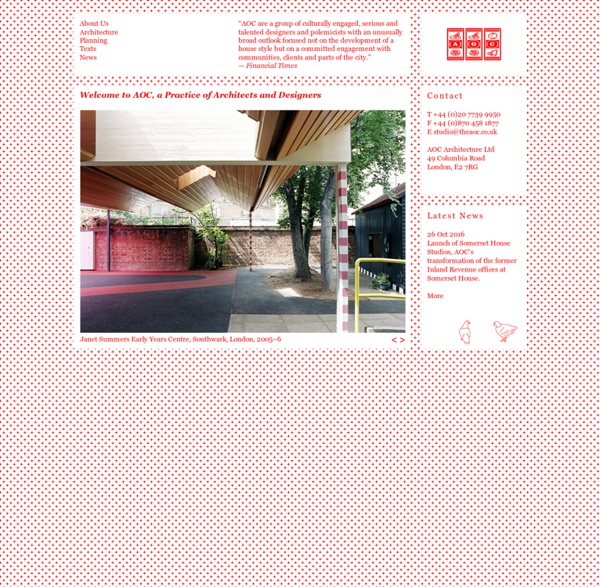



Caruso St John Architects Tour maraîchère à Romainville | Atelier Altern paysagistes Agriculture urbaine Le projet de «tour maraichère» est une ambition de multiplier les possibles de l’agriculture urbaine. Il résulte de la volonté de la Ville de Romainville de renforcer le réseau de producteurs locaux en place sur le territoire. MAÎTRISE D’OUVRAGEVille de Romainville RÔLECo-traitant MAÎTRISE D’OEUVREABF lab architectes (mandataire) Atelier Altern paysagistes Topager S2T BET MISSIONConcours restreint LOCALISATION Romainville (93) SUPERFICIE 1500 m2 MONTANT DES TRAVAUX 3,5 millions d’euros H.T. dont 150 000 euros H.T paysage
Jonathan Woolf Architects Brick Leaf House, London ARCHITECTES COLLECTIFS Virage est une association de quatre ateliers d’architecture dont trois d’entre eux pratiquent dans et depuis le milieu rural. Le quatrième est installé en banlieue parisienne. Ils sont liés par le partage de services, d’expériences et d’idéaux. Virage est un collectif engagé. Pour faire face à la grave crise économique, écologique et sociale dont souffrent les territoires, il cherche à politiser les questions architecturales ou urbaines et aborder la situation comme une occasion de changer de modèle. Virage est une association de structures autonomes mais solidaires économiquement par un système d’actionnariat croisé. Virage s’intéresse avant tout aux situations en marge des grandes et très performantes métropoles françaises. Virage est constitué d’architectes de terrain, disposant un bagage technique conséquent. Virage considère l’intelligence économique comme une dimension centrale du savoir-faire de l’architecte contemporain. Virage s’est formé pour une durée de 10 ans. << retour
F o R M Associates : Urban Design - Landscape Architecture - Place Making Philippe Madec | atelierphilippemadec Né en Bretagne (France) en 1954, pionnier du développemnt durable en urbanisme et architecture, Philippe Madec vit à Paris et Bruxelles. Formé à l'architecture au Grand-Palais à Paris (atelier Ciriani/Maroti) de 1972 à 1979, il crée son atelier à Paris en 1989. Entre temps, il n'a pas de pratique professionnelle, voyage et vit à l'étranger, conduit une recherche sur la pédagogie et la théorie architecturales et écrit son premier livre sur Etienne Louis Boullée. Depuis lors, il poursuit de concert trois activités : l'écriture, l'enseignement et la pratique professionnelle de ses métiers d'architecte et d'urbaniste. D'héritage familial, par engagement personnel et grâce à la rencontre de Kenneth Frampton en 83/84, Philippe Madec développe une approche éco-responsable du projet architectural et urbain depuis le début de sa pratique professionnelle. En 2015 il devient expert auprès de l'ONU pour la préparaion du sommet Habitat III à Quito en octobre 2016.
6a architects GRAU 0. Urbanization without urbanism In 2013 the city of Bordeaux commissioned GRAU, in collaboration with Michel and Claire Corajoud, to propose a master plan for the future development of Caudéran district in Bordeaux. With 43,000 inhabitants spread over 750 ha, the area is almost saturated and the scarcity of available land requires alternative solutions to be found to develop the city with the existing and the private sector. If it is necessary to preserve the existing residential qualities we must now anticipate the evolution of Cauderan in the future. I. Two preliminary findings guide the transformation of Caudéran in time: 1. 2. II. The master plan take the existing residential qualities as a starting point to clarify the organization of the territory and allow its continuous optimization. 1. 2. 3. 4. III. In order for Caudéran to evolve in a sustainable way new adapted solutions must be found. IV. This space should be fluid, economic and contribute to develop the nature city. V. VI.